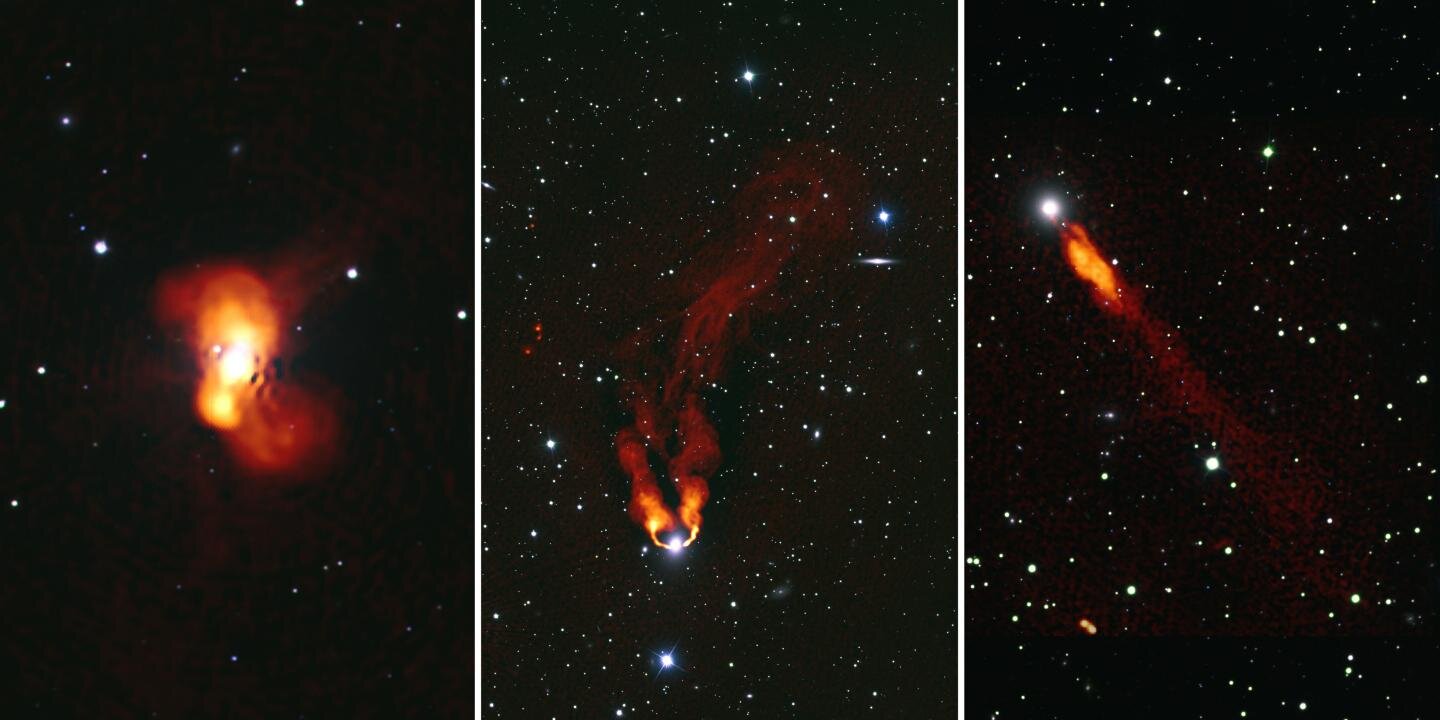
[ad_1]

Galaxies in the Perseus cluster, left to right: NGC 1275, NGC 1265, IC 310. Left: the giant galaxy NGC 1275, in the center of the cluster, is seen in new detail, including a new wealth of filamentous complex structures in the its radio lobes. Center: The galaxy NGC 1265 shows the effects of its movement through the tenuous material between galaxies. Its radio jets are bent back from that interaction, then merge into a single, broad “tail”. The tail is then further bent, possibly by movements within the intergalactic material. Right: The jets of the galaxy IC 310 are bent backwards, similar to NGC 1265, but appear closer due to the angle of view from Earth. That angle also allows astronomers to directly observe energetic gamma rays generated near the supermassive black hole at the center of the galaxy. Credit: M. Gendron-Marsolais et al .; S. Dagnello, NRAO / AUI / NSF; Sloan Digital Sky Survey.
For galaxies, as for people, living in a crowd is different from living alone. Recently, astronomers used the National Science Foundation’s Karl G. Jansky Very Large Array (VLA) to learn how a crowded environment affects galaxies in the Perseus cluster, a collection of thousands of galaxies about 240 million light-years from Earth. .
Left: The giant galaxy NGC 1275, at the center of the cluster, is seen in new detail, including a new wealth of complex filamentous structures in its radio lobes.
Center: The galaxy NGC 1265 shows the effects of its movement through the tenuous material between galaxies. Its radio jets are bent back from that interaction, then merge into a single, broad “tail”. The tail is then folded further, possibly by movements within the intergalactic material.
Right: The jets of the galaxy IC 310 are bent backwards, similar to NGC 1265, but appear closer due to the angle of view from Earth. That angle also allows astronomers to directly observe energetic gamma rays generated near the supermassive black hole at the center of the galaxy.
Such images can help astronomers better understand the complex environment of galaxy clusters, which are the largest gravitationally bound structures in the universe and host a variety of still poorly understood phenomena.
“These images show us structures and details never seen before and this helps our efforts to determine the nature of these objects,” said Marie-Lou Gendron-Marsolais, an ESO / ALMA fellow in Santiago, Chile. She and a number of them. of international collaborators are announcing their findings in the Royal Astronomical Society’s monthly notices.
A black hole ignites the cold heart of the Phoenix?
A Richard-Laferrière et al. On the relationship between mini-halos and AGN feedback in galaxy clusters, Royal Astronomical Society Monthly Notices (2020). DOI: 10.1093 / mnras / staa2877
Provided by National Radio Astronomy Observatory
Quote: Galaxies in the Perseus Cluster (2020, November 12) retrieved November 12, 2020 from https://phys.org/news/2020-11-galaxies-perseus-cluster.html
This document is subject to copyright. Aside from any conduct that is correct for private study or research purposes, no part may be reproduced without written permission. The content is provided for informational purposes only.
[ad_2]
Source link